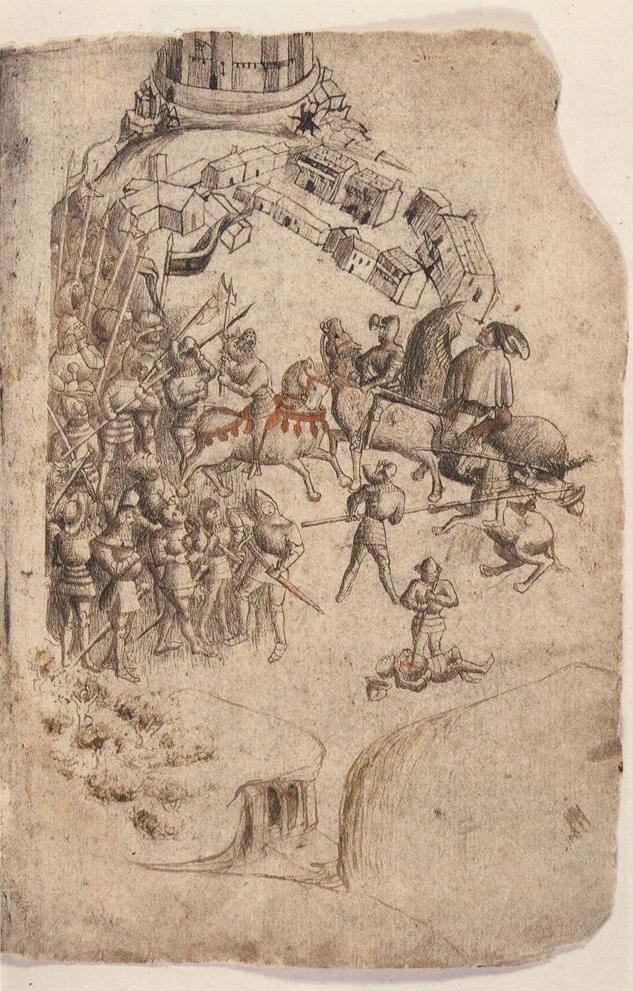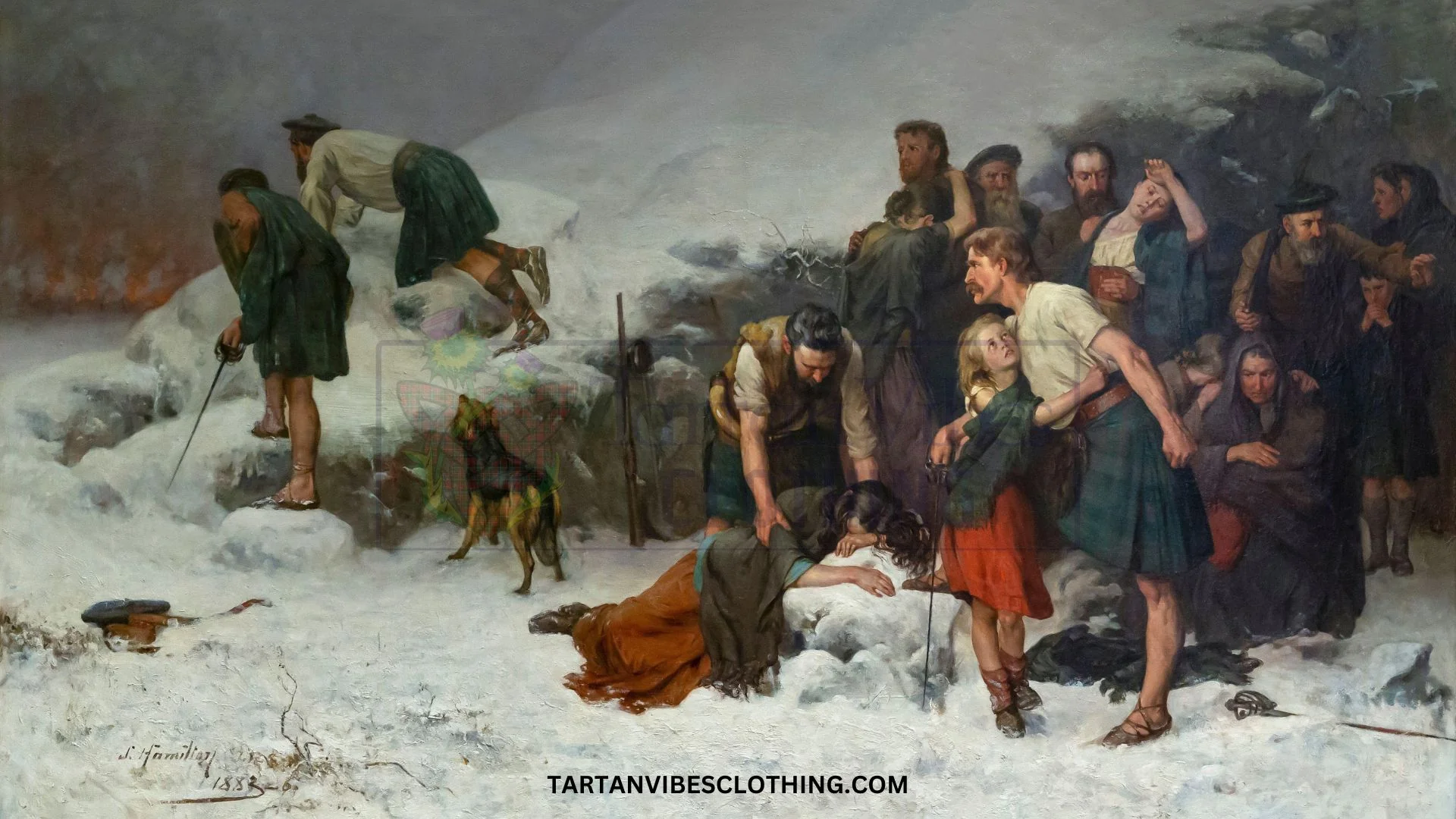MacDonald of Glencoe: Legacy of Strength and Resilience
by Teresa Finn on Aug 16, 2024
Table of Content
The MacDonald of Glencoe is a clan steeped in rich history, characterized by resilience and tragedy. As a prominent branch of the more significant MacDonald lineage, this Highland clan has made its mark on Scotland's narrative, enduring hardships while maintaining deep ties to their heritage. The region of Glencoe, known for its breathtaking landscapes and storied past, serves as both home and stronghold for the MacDonald of Glencoe. This article aims to explore the multifaceted dimensions of the clan, shedding light on their origins, territorial significance, historical events, cultural symbols, and legacy that resonates through time.
I. Origins of Clan MacDonald of Glencoe
The MacDonalds of Glencoe, also known as the MacIains of Glencoe or Clann Iain Abrach, are a significant branch of the more prominent Clan Donald, one of the most influential Scottish clans. Their origins are deeply rooted in the legacy of Somerled, a 12th-century Norse-Gaelic chieftain who established the Lordship of the Isles. Somerled's leadership and strategic marriages helped create a mighty dominion that spanned the Hebrides and parts of western Scotland, laying the groundwork for the MacDonald dynasty.
The MacDonalds of Glencoe trace their lineage to Iain Fraoch MacDonald, the son of Aonghus Óg of Islay, a key ally of Robert the Bruce during the First War of Scottish Independence. Aonghus Óg's loyalty and military support, particularly at the Battle of Bannockburn in 1314, earned him lands, including Glencoe, as a reward from Robert the Bruce. Iain Fraoch, the first MacDonalds to settle in Glencoe, established the clan in the rugged and strategically significant valley.
By the late Middle Ages, the MacDonalds of Glencoe had developed a distinct identity within Clan Donald. Their isolated and formidable home in Glencoe provided natural defenses and vital resources, solidifying their presence in the Highlands. They strengthened their influence through strategic alliances and marriages with other clans, becoming an integral part of Scotland’s historical landscape.

II. Territory of Clan MacDonald of Glencoe

The territory of the MacDonald of Glencoe, a branch of Clan Donald, was centered in Glencoe's rugged and picturesque landscape in the central Highlands of Scotland.
Glencoe, the heartland of the MacDonald of Glencoe, is renowned for its striking natural beauty, with towering mountains and deep valleys. This harsh terrain not only provided a home but also served as a formidable stronghold that protected the clan from external threats. The challenging landscape demanded resilience, a quality synonymous with the MacIains.
Beyond Glencoe, the MacDonald of Glencoe extended their influence into Ardgour and Ardnamurchan. Ardgour, located along the western shores of Loch Linnhe, offered access to crucial sea routes vital for trade and communication. Ardnamurchan, a remote peninsula with dramatic coastlines, provided fertile lands and rich fishing grounds, essential for the clan's sustenance.
The clan's reach extended into Sunart, known for its deep gorges and majestic peaks. Sunart's natural resources supported the clan's livelihood, reinforcing their connection to the Highland landscape. The territory of the MacDonald of Glencoe was defined by its rugged terrain and natural beauty, shaping the clan's identity and enduring connection to the Scottish Highlands.
III. Clan MacDonald of Glencoe History

16th Century: Expansion and Rivalries
During the 16th century, the MacDonald of Glencoe, also known as the MacIains, faced a challenging environment marked by territorial disputes and competition with neighboring clans. Glencoe's sparse, rugged terrain drove them to engage in cattle raids, a common practice in the Highlands, though they often disavowed direct involvement. Meanwhile, the rise of Clan Campbell, fueled by royal favors and strategic marriages, began to undermine the power of the MacDonalds, setting the stage for future conflicts.
17th Century: The Struggle with the Campbells
MacDonalds and the Campbells reach its peak. Under Archibald Campbell, 1st Marquess of Argyll, the Campbells gained political dominance, leading to significant losses for the MacDonalds, including the burning of their strongholds. This period also saw the MacDonald of Glencoe embroiled in battles such as the Battle of Killiecrankie, where they emerged victorious but continued to face relentless pressure from the Campbells.
The most defining moment in the history of the MacDonald of Glencoe they occurred on February 13, 1692, when they were targeted in the infamous Massacre of Glencoe. Due to a delayed oath of allegiance to King William III, the MacDonalds were ambushed by troops led by Captain Robert Campbell of Glenlyon. The massacre resulted in the deaths of approximately 30 clan members, marking a tragic and pivotal point in their history.

18th Century: Rebellion and Decline
In the 18th century, the MacDonald of Glencoe supported the House of Stuart in the Jacobite uprisings of 1715 and 1745. They fought at the Battle ofi Sheriffmuir and later joined Charles Edward Stuart in the 1745 Rising. Despite their efforts, the Jacobite cause was ultimately defeated, leading to harsh reprisals from the British government. The clan's power and influence continued to wane. By the end of the century, they had become a shadow of their former selves.

19th Century: Decline and Legacy
The 19th century marked the decline of the MacDonalds of Glencoe, with the last chief, Alexander James MacDonald, 19th of Glencoe, passing away in 1889. With no successor to lead the clan, the MacDonalds of Glencoe became an armigerous clan, losing their formal leadership. Despite this, their legacy endures, mainly through the memory of the Glencoe Massacre, which remains a powerful symbol of betrayal and resilience in Scottish history.

Present Day: Preservation and Research
In recent years, efforts to preserve and study the history of the MacDonald of Glencoe have gained momentum. Archaeological surveys by the National Trust for Scotland have uncovered and documented the remains of settlements in Glencoe, providing new insights into the clan's past and the aftermath of the massacre. These efforts ensure that the story of the MacDonalds of Glencoe continues to be remembered and honored.
IV. Clan MacDonald of Glencoe Castle
Inverlochy Castle

Inverlochy Castle, near Fort William, was a significant stronghold for the MacDonald of Glencoe in their early history. Built in the 13th century, it showcased the clan's power and strategic importance. Though it eventually fell to the Campbells, its ruins remain a symbol of the clan’s former might and the turbulent history of the Highlands.
Glencoe House
Glencoe House was the primary residence of the MacDonald of Glencoe. This grand house reflected the clan’s wealth and influence. Tragically, it was destroyed by fire in the mid-18th century, marking a turning point in the clan's physical presence. Its legacy, however, lives on in the clan's history.
Other Fortified Dwellings
Discover the rich history of Highland heritage. Read more about Clan Macdonald Castles now!
V. Clan MacDonald of Glencoe Coat Of Arms
The Coat of Arms of Clan MacDonald of Glencoe is a vivid emblem of the clan’s storied heritage. It is closely related to the arms of the MacDonald of Ardnamurchan and MacDonald of Sleat, yet with distinct features that mark its unique identity.
Key Elements of the Coat of Arms:
- Top Right Shield (Argent, Red Lion): A red lion rampant on a white background, fiercely roaring with flames, symbolizes courage and power. The lion's stance and expression represent the indomitable spirit of the clan, with a golden background highlighting their noble heritage.
Top Left Shield (Argent, Arm Holding Cross): A white-armored arm holding a black cross, which splits into three smaller crosses at the top, symbolizes faith and the clan's steadfastness. This emblem reflects their enduring loyalty to their beliefs and the Highland traditions.
Bottom Right Shield (Or, Black Galley): A black ship on a golden background represents the clan's maritime strength and deep connection to the seas, highlighting their role as protectors of the Western Isles.
Bottom Left Shield (Vert, Salmon): A swimming salmon on a green background represents perseverance and the clan's adaptation to the rugged Highland environment. The fish also connects the clan to the natural resources that sustain their way of life.

Motto
The motto “Nec Tempore Nec Fato” translates to "Neither Time nor Fate," reflecting the clan's defiance against the forces that have shaped their history. Given their tragic past, this motto is especially poignant for the MacDonald of Glencoe.
An unofficial crest, often seen with the motto “Cuimhnich” (Gaelic for "Remember"), is popular among the clan's descendants. Though not heraldically justified, this crest carries significant emotional weight, reminding the clan of their enduring legacy.
VI. Clan MacDonald of Glencoe Crest
The crest of Clan MacDonald of Glencoe is rich in symbolism, reflecting the clan's storied history and enduring legacy. The crest features a hand holding a sgian dhu—a traditional Scottish dagger known as the "dark dagger"—surrounded by an open laurel wreath.
The sgian dhu (pronounced "ske-in gu") represents the clan's warrior spirit and readiness to defend their honor. The laurel wreath, an ancient symbol of victory and peace, frames the dagger, signifying the balance between strength and honor. This powerful imagery connects the MacDonald of Glencoe to their Highland heritage, symbolizing their resilience and the pride they take in their lineage.

The Clan MacDonald of Glencoe crest is often depicted in a romanticized form, inspired by Victorian-era illustrations, such as those by R. R. McIan in his 1845 publication, The Clans of the Scottish Highlands. This historic portrayal resonates with descendants and clan members, serving as a proud emblem of their identity.
VII. Clan MacDonald of Glencoe Tartan
The MacDonald of Glencoe Tartan embodies the rugged beauty of the Glencoe region. Featuring a harmonious blend of earthy tones, including brown and green, this tartan is interspersed with blue and red highlights. These colors reflect the natural landscapes and pay tribute to the MacDonalds, who made Glencoe their home. The MacDonald of Glencoe tartan visualizes the clan's deep connection to the land, evoking the rich history and heritage of the MacDonald of Glencoe.

Conclusion
Frequently Asked Questions
What happened to the MacDonald of Glencoe?
One dark, wintery night in February 1692, members of the resident MacDonald of Glencoe Clan were murdered, as they slept by troops of the Clan Campbell. Operating under orders from the Government, thirty-eight men, women and children all perished in an episode of Scottish history that remains controversial to this very day.
Which Scottish clan was killed for not taking the oath?
An estimated 30 members and associates of Clan MacDonald of Glencoe were killed by Scottish government forces, allegedly for failing to pledge allegiance to the new monarchs, William III and Mary II.
What is the significance of the MacDonald of Glencoe Crest?
The crest features a hand holding a sgian dhu (dark dagger) surrounded by a laurel wreath, symbolizing the clan's warrior spirit, readiness to defend their honor, and the balance between strength and peace.
Were the MacDonald's of Glencoe Catholic?
Presbyterianism was the main religion of both monarchs and church governance at that time. It is thought that the MacDonalds of Glencoe were Episcopalian or possibly Catholic, therefore a threat to governance.
What does the MacDonald of Glencoe Coat of Arms symbolize?
The MacDonald of Glencoe coat of Arms includes symbols like a red lion, a black ship, and a swimming salmon, representing the clan's courage, maritime strength, and resilience. The motto "Nec Tempore Nec Fato" means "Neither Time nor Fate," reflecting their defiance against adversity.







